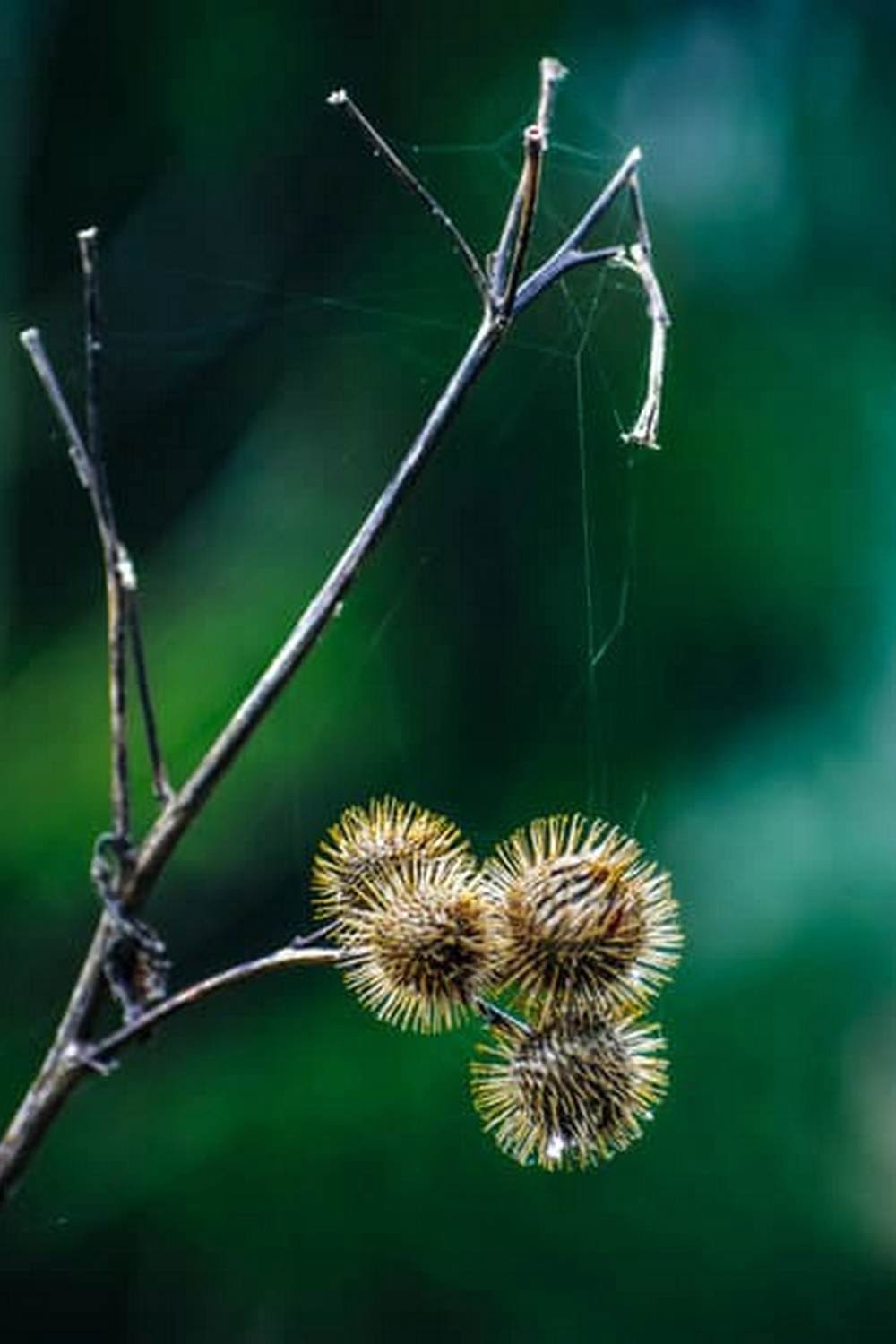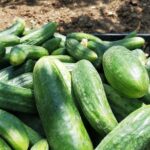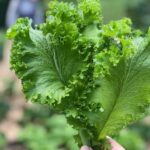Are you wondering what flowers help vegetable gardens in Utah? Flowers can play a crucial role in the success of a vegetable garden, especially in a unique climate like Utah’s.
Planting the right flowers alongside your vegetables can attract pollinators, deter pests, and even enhance the overall beauty of your garden. In this article, we will explore the importance of incorporating flowers into your Utah vegetable garden and provide guidance on which flower varieties are best suited for this environment.
The climate and soil conditions in Utah present both challenges and opportunities for gardeners. Understanding how these factors can impact the success of a vegetable garden is essential for making informed planting decisions. By choosing the right flowers, you can work with these conditions to create a flourishing and productive garden.
In addition to their visual appeal, flowers serve a practical purpose in vegetable gardens by attracting pollinators such as bees and butterflies. This aids in the natural pollination of your crops, resulting in improved yields. We will discuss various flower varieties that are particularly effective at attracting and supporting pollinators while thriving in Utah’s unique environment.
Climate and Soil Conditions in Utah
Utah is known for its unique climate and soil conditions, which can have a significant impact on the success of a vegetable garden. Understanding these factors is essential for determining which flowers will thrive alongside your produce. The state’s climate is characterized by hot, dry summers and cold, snowy winters, making it a challenging environment for gardening. In addition, Utah’s soil tends to be alkaline and contains high levels of clay, which can affect the growth of plants.
When selecting flowers for your vegetable garden in Utah, it is important to choose varieties that are well-suited to the local climate and soil conditions. Some flower species are better equipped to handle the extreme temperatures and arid conditions of Utah, making them ideal companions for vegetables. Here are some flower options that are well-suited to Utah’s climate and soil:
- Sunflowers: These vibrant blooms are not only beautiful but also attract pollinators such as bees and butterflies. They are also drought-tolerant, making them an excellent choice for Utah gardens.
- Lavender: Known for its fragrant aroma and striking purple flowers, lavender is well-adapted to Utah’s dry climate and alkaline soil. It also repels pests like mosquitoes and flies, making it a beneficial companion plant for vegetables.
- Penstemon: This native wildflower thrives in Utah’s rocky soils and can withstand hot, sunny conditions. Its tubular flowers attract hummingbirds and other pollinators while adding color to the garden.
By choosing flowers that can withstand Utah’s climate and soil conditions, you can create a beautiful and beneficial companion garden alongside your vegetables. Whether you’re looking to attract pollinators, repel pests, or simply add visual appeal to your garden space, there are numerous flower options that will complement your vegetable crops in Utah.
Flowers for Pollination
When it comes to vegetable gardens in Utah, the role of pollination should not be underestimated. The presence of flowers that attract pollinators such as bees and butterflies is crucial for ensuring the successful growth and fruiting of many vegetable crops. These pollinators play a key role in transferring pollen from one flower to another, allowing plants to produce fruits, seeds, and the vegetables we harvest.
Some types of vegetables, such as squash, cucumbers, and tomatoes, rely heavily on insect pollinators to produce a good yield. Therefore, it is essential to include flowering plants in your garden that will attract these beneficial insects. Some examples of flower varieties that are known for their ability to attract bees and butterflies include lavender, bee balm, sunflowers, and zinnias.
In addition to attracting pollinators, these flowers can also add beauty and color to your vegetable garden while supporting local ecosystems by providing food and habitat for native insect species. By incorporating a variety of pollinator-friendly flowers into your garden plan, you can create a more vibrant and productive growing environment.
| Flower Variety | Pollinator Attraction |
|---|---|
| Lavender | Bees |
| Bee Balm | Butterflies |
| Sunflowers | Bees |
| Zinnias | Butterflies |
Companion Planting
Flowers for Pest Control
Certain flowers are known for their ability to repel pests or attract beneficial insects that prey on garden pests. For example, marigolds are a popular choice for companion planting as they emit a scent that deters nematodes, aphids, and other harmful insects. Similarly, nasturtiums can help protect squash and other cucurbits from aphids and beetles. By incorporating these flowers into a Utah vegetable garden, gardeners can naturally minimize the need for chemical pesticides while promoting a healthier garden environment.
Improved Growth
In addition to pest control, some flowers can also contribute to improved growth and productivity in vegetable gardens. For instance, planting borage alongside tomatoes has been said to increase overall tomato yield.
The blue star-shaped blooms of borage attract pollinators such as bees, resulting in more efficient fertilization of tomato flowers and ultimately leading to larger and juicier fruits. Other examples of flowers that promote improved growth when planted near specific vegetables include calendula with carrots and sunflowers with corn.
By incorporating these companion planting strategies into their Utah vegetable gardens, both novice and experienced gardeners can cultivate healthier, more productive crops while creating vibrant floral displays that enhance the beauty of their outdoor spaces.
Native Flower Species
When it comes to adding flowers to a vegetable garden in Utah, considering native flower species can be beneficial in multiple ways. Native flowers are well-adapted to the local climate and soil conditions, making them more likely to thrive and require less maintenance. In addition to their ability to withstand Utah’s unique environment, native flowers also play a crucial role in supporting local ecosystems by providing food and habitat for native wildlife.
Some native flower species that are particularly well-suited for Utah vegetable gardens include the Rocky Mountain Columbine, Blue Flax, Orange Globe Mallow, and Showy Milkweed. These flowers not only add visual appeal to the garden but also attract important pollinators such as bees and butterflies. By incorporating native flower species into the garden, gardeners can help maintain biodiversity and promote a healthier environment for both plants and animals.
Another advantage of using native flower species in a Utah vegetable garden is their ability to withstand drought conditions. Many native flowers have evolved to survive with minimal water, making them ideal choices for a region where water conservation is a concern. By choosing drought-tolerant native flowers, gardeners can contribute to water conservation efforts while still enjoying the beauty and benefits of a floral component in their vegetable garden.
Seasonal Planting
When it comes to planting flowers in a Utah vegetable garden, timing is crucial. Different flower varieties thrive in specific seasons, so it’s essential to have a planting schedule that aligns with the growing season. Here are some suggestions for seasonal planting in a Utah vegetable garden:
- Spring: During the spring, consider planting flower varieties such as tulips, daffodils, and crocuses. These early bloomers can add color and beauty to your garden while also attracting pollinators.
- Summer: As the weather warms up, you can introduce heat-tolerant flowers like zinnias, sunflowers, and marigolds. These vibrant blooms can brighten up your garden and support pollinators during the peak of the growing season.
- Fall: In the fall, consider planting fall-blooming flower varieties such as asters, mums, and ornamental kale. These flowers can extend the beauty of your garden into the cooler months and provide nectar for migrating butterflies and hummingbirds.
By strategically planning your flower planting throughout the seasons, you can ensure that your Utah vegetable garden remains visually stunning and supportive of local ecosystems year-round.
In addition to considering seasonal changes in temperature and precipitation, be sure to factor in the specific needs of each type of flower you choose to plant in your vegetable garden.
Overall, taking a thoughtful approach to seasonal planting will allow you to enjoy a diverse array of blooms while also reaping the benefits of increased pollination and pest control in your vegetable garden.
Drought-Tolerant Flowers
Utah is known for its dry climate and challenges with water conservation, making it essential to select flowers that are drought-tolerant for vegetable gardens. Drought-tolerant flowers have the ability to withstand prolonged periods of limited water supply, making them ideal choices for Utah’s arid conditions.
Recommended Drought-Tolerant Flowers
When selecting flowers for a vegetable garden in Utah, it is important to consider those that can thrive in low-moisture environments. Some popular drought-tolerant flower options include lavender, yarrow, Russian sage, blanket flower, and desert marigold. These varieties not only add beauty and color to the garden but also require minimal watering compared to other plants.
Benefits of Drought-Tolerant Flowers
By incorporating drought-tolerant flowers into a vegetable garden in Utah, gardeners can conserve water while still enjoying a vibrant and visually appealing landscape. These flowers can also provide habitat and food sources for local wildlife, contributing to the overall biodiversity of the garden.
Care Tips for Drought-Tolerant Flowers
To ensure the success of drought-tolerant flowers in a Utah vegetable garden, proper care is essential. It is important to establish these plants in well-draining soil and provide occasional deep watering to encourage strong root systems.
Additionally, applying a layer of mulch around the base of the flowers can help retain moisture and protect the plants during hot weather. Proper maintenance and regular inspection for pests or diseases will also contribute to the health and longevity of these resilient blooms.
Maintenance and Care Tips
When it comes to maintaining a successful vegetable garden in Utah, the care and maintenance of the accompanying flowers are equally important. Proper care ensures that your flowers not only look beautiful but also support the overall health and productivity of your garden. One essential aspect of flower care is watering.
In Utah’s arid climate, it’s crucial to water your flowers regularly, especially during the hot summer months. Be sure to water deeply at the base of the plants to encourage deep root growth and drought tolerance.
In addition to watering, fertilizing your flowers is another key aspect of their care. Choosing a balanced fertilizer and applying it according to the instructions can help promote healthy growth and vibrant blooms. However, be cautious not to over-fertilize as this can lead to excessive foliage growth at the expense of flower production.
It’s also important to monitor for pests and diseases, as these can quickly impact both your flowers and vegetables. Regular inspection and prompt treatment can help keep your garden healthy.
Lastly, when caring for flowers in a vegetable garden, consider utilizing natural methods for pest control. Some insects may be beneficial for both your vegetables and flowers, while others may cause harm. Understanding which insects are friend or foe can help you create a harmonious environment for all elements of your garden. By implementing these maintenance and care tips, you can create a beautiful and thriving flower garden alongside your vegetables in Utah.
Conclusion
In conclusion, it is evident that adding flowers to a vegetable garden in Utah can provide numerous benefits. Not only do they attract pollinators like bees and butterflies, but they also contribute to pest control and improved growth through companion planting.
Native flower species thrive in the unique climate of Utah and can support local ecosystems, while drought-tolerant flowers offer a practical solution for water conservation. By following a seasonal planting schedule and implementing proper maintenance and care tips, it is possible to create a vibrant and healthy flower garden alongside vegetables in Utah.
As we have discussed the various ways in which flowers can enhance a vegetable garden in Utah, we encourage readers to consider incorporating them into their own gardening practices. Whether it be for the beauty they add to the garden, their role in attracting beneficial insects, or their contribution to sustainable gardening practices, flowers are an asset to any vegetable garden.
We hope that this article has provided helpful insights and tips for successfully integrating flowers into a Utah vegetable garden.
We also invite readers to share their experiences with us as they explore the world of flower gardening alongside vegetables in Utah. By exchanging knowledge and learning from one another’s successes and challenges, we can continue to improve our gardening skills and enjoy the rewards of a flourishing vegetable and flower garden. Thank you for taking the time to learn about the valuable role that flowers can play in Utah’s vegetable gardens.
Frequently Asked Questions
What Flowers Go Good in a Vegetable Garden?
Flowers that go well in a vegetable garden include marigolds, sunflowers, nasturtiums, and zinnias. These flowers not only add beauty to the garden but also serve as natural pest repellents and attract pollinators, ultimately benefiting the overall health and productivity of the vegetable plants.
What Grows Well in Utah Garden?
Several plants grow well in a Utah garden due to its unique climate and soil conditions. Vegetables like tomatoes, peppers, potatoes, carrots, and lettuce thrive in Utah’s growing conditions. Additionally, fruits such as apples, cherries, and peaches can also flourish in Utah gardens with proper care.
What Is the Easiest Vegetable to Grow in Utah?
One of the easiest vegetables to grow in Utah is the tomato. With adequate sunlight and regular watering, tomatoes can thrive in Utah’s climate. They are versatile plants that can be grown in containers or directly in the ground, making them an excellent choice for both beginner and experienced gardeners alike.

If you’re looking to get into vegetable gardening, or are just looking for some tips on how to make your current garden better, then you’ve come to the right place! My name is Ethel and I have been gardening for years. In this blog, I’m going to share with you some of my best tips on how to create a successful vegetable garden.





